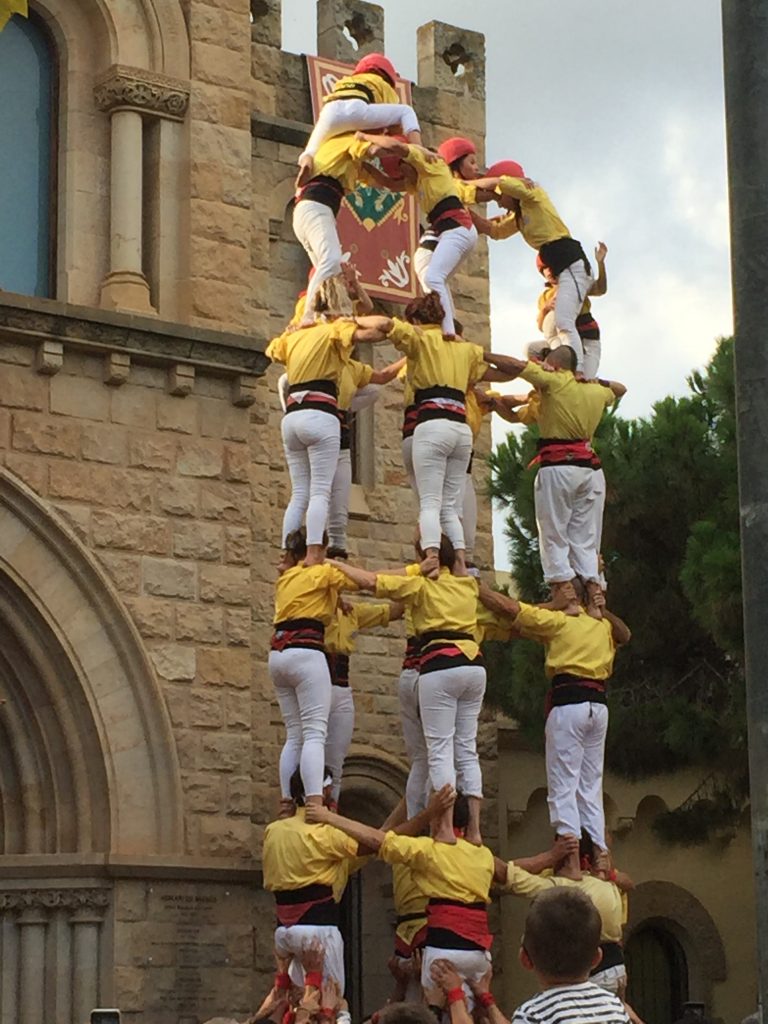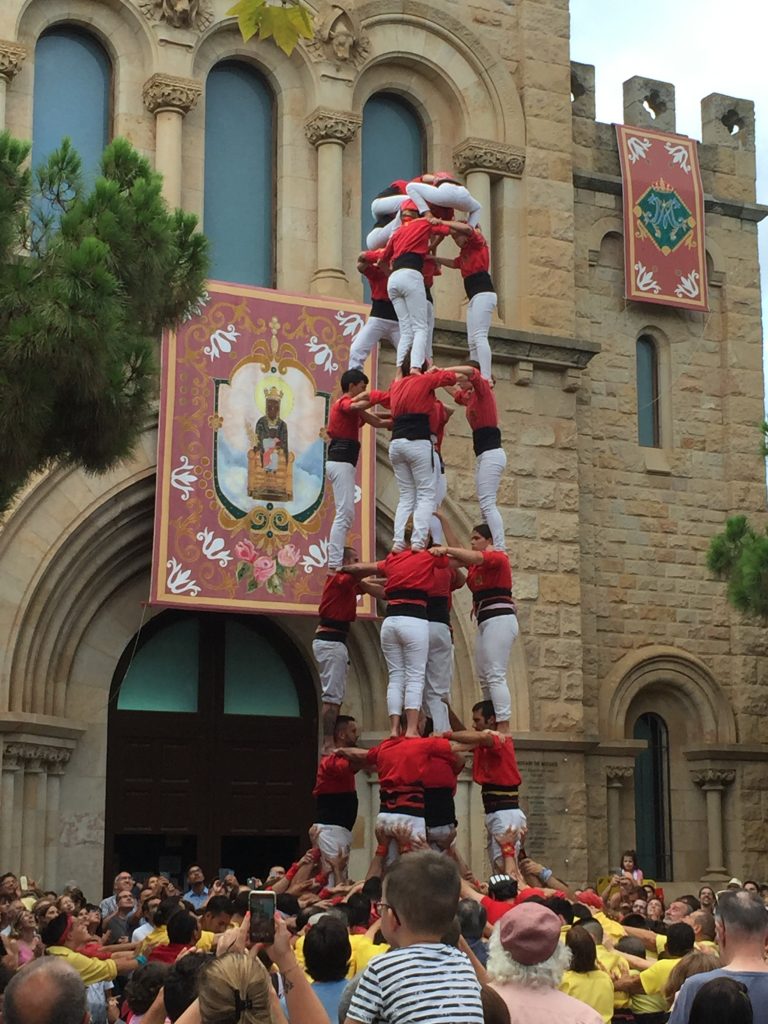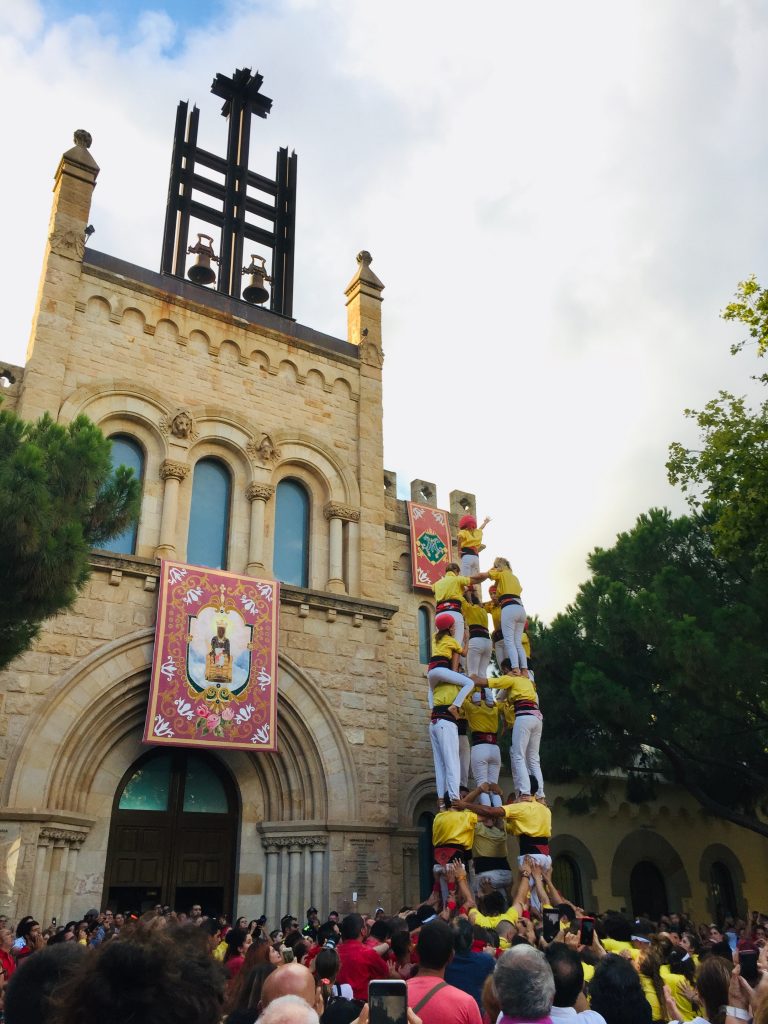On 15 August, 2019, we sat down to dinner at 5 minutes before 7pm and suddenly Allita remembered the Castelleres! Holy smokes! We forgot!! We jumped up, scared the crap out of the cat sleeping on the floor nearby, left our dinner cooling on the table and dashed out the door to the church plaza. We were afraid we were too late because the itinerary showed that these particular festivities started at 6:30pm. Fortunately, we arrived just in time to witness the Castellers de Castelldefels as they built a 6-layered human tower.

These castells, the Catalan word for castle, are world famous and I had been anxiously awaiting this awesome event since I first started studying Barcelona some years ago. However, I did not expect to see them so soon! Lucky me – YAY! The castellers wear white pants, a black sash and a bandana (around the sash). Each colles (group) has a different color and the castellers shirts are the corresponding color for their colles. In our case, the castellers of Castelldefels wear yellow-gold.
As with the Cercavila, another group of performers from a nearby city joined in this portion of the festival. The Castellers of Vilafranca. These castellers became even more famous in 2015 when along with the Minyons of Terrassa, they constructed the tallest castell in history – it was 10 layers high!! However, that evening in the city center, the castells were only 5-6 layers high.

Many were constructed in the traditional manner, from base (pinya) to top where the enxaneta raises his/her hand and waves that the castell is completed. The crowd cheered and the band played and the castellers slowly decended back to Earth. Each time, we watched with baited breath as the colles piled hands together and big, strapping men worked to build the beginning of the tower. There was clearly a leader who communicated each step of the building process. He would signal the next group of castellers and they would slowly start to climb the pile of people to make the next layer. Eventually, women joined the castell. I learned later that women are advantageous in building castells because they are lighter and allow for taller construction. Obviously, they are not referring to Allita and I. We are more like base material.
The castellers would take a short break after each tower was completed and then they would start again. There was one castell called aixecat per sota which means “raised from below”. I couldn’t figure out why this particular one got so much interest from the crowd. When it was announced, a surge of spectators pressed forward toward the colles. Turns out, instead of building the base and then each successive layer, in this case, the top was built and then raised by boosting the person on to the shoulders of the next casteller! The first person was the tiny child who typically stands atop these castells. We watched, part in terror and part in fascination (kind of like watching a vehicular accident occur in front of you), as the person supporting the child was suddenly raised up to stand on the shoulder of another casteller. This happened again and again until it was 5 layers high! The crowd went nuts when the child, enxaneta, raise her hand high in the air to signal the tower was built. They cheered even more for the man who supported the base and I gaped and grinned as someone ran a giant bottle of water over to him from a nearby market.

We observed tower after tower until the lack of food, heat and humidity finally took their toll and we trudged, thrilled but tired, back to the hotel to eat our belated, now very cold meal. I just hope the cat didn’t lick anything.
Very interesting culture. I dont know the Spanish words but you get the point accross. Love it.
Lol. . . Great story!